Honda Jazz Crosstar Review 2025: Price, specs & boot space
Written by Andrew Brady
Quick overview
Pros
- Looks a bit more interesting than the standard Jazz
- Water-repellent upholstery could prove useful
- The sound system is pretty good
Cons
- Pricier than a normal (already quite expensive) Jazz
- Not that different to a normal Jazz
- No more comfortable or capable off-road
Overall verdict on the Honda Jazz Crosstar
"The standard Honda Jazz is an excellent car, with low running costs and a versatile interior. The Jazz Crosstar builds on that with rugged styling and some extra equipment as standard. Its faux-SUV design gives it some appeal but, in truth, its relatively high price tag makes it tough to justify. Who needs a Jazz with extra ground clearance, anyway?"
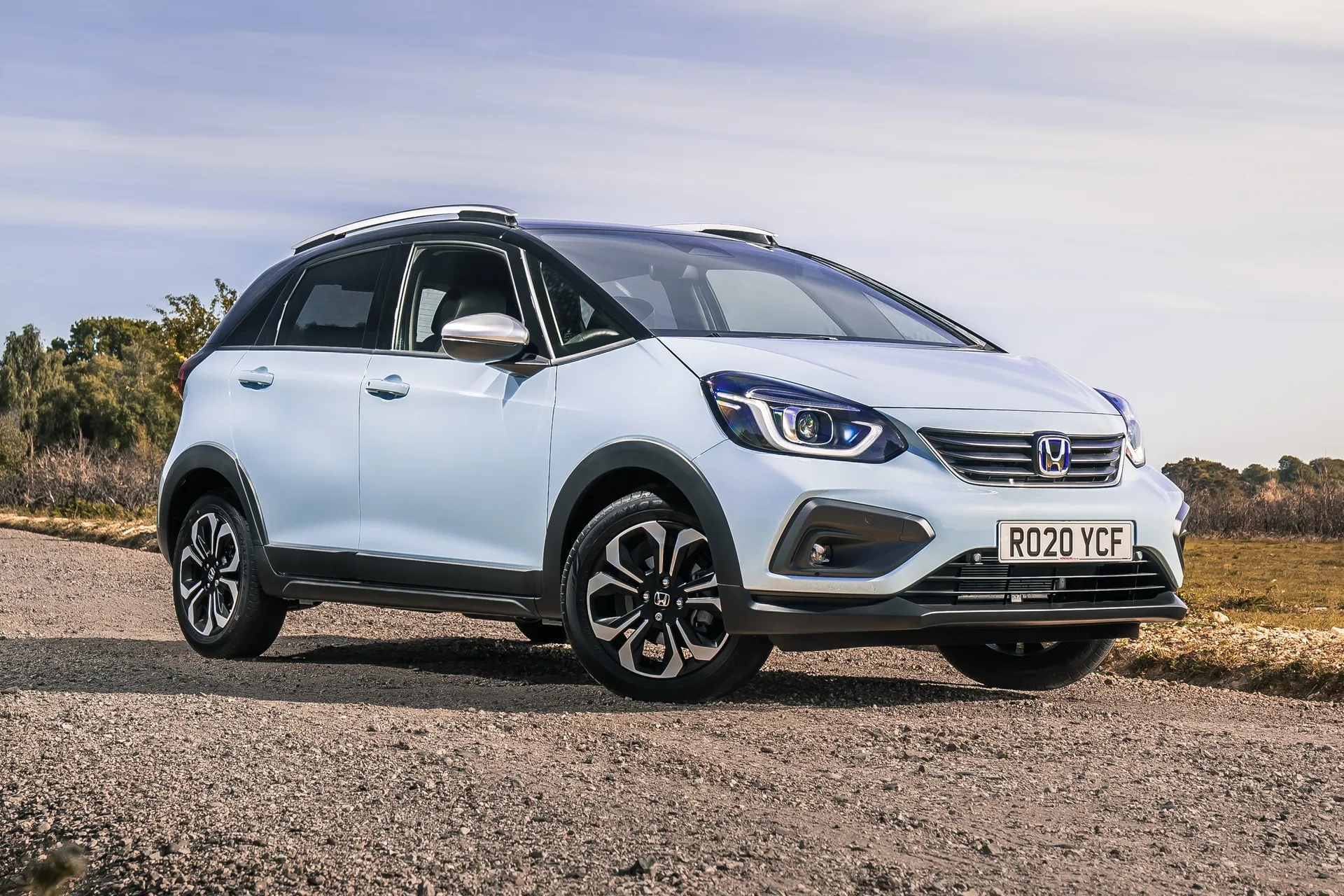
Ever found yourself wishing the Honda Jazz was a little more… rugged? Well, good news. The brand’s given it the off-roader treatment - well, sort of, as this review will discuss. It’s called the Crosstar and it’s based on the excellent new Honda Jazz Hybrid.
The Honda Jazz Crosstar takes a similar approach to the Dacia Sandero Stepway and short-lived Hyundai i20 Active, cashing in on the SUV and crossover craze by adapting some of the design traits of those popular cars - if none of the off-road ability and additional practicality.
Unlike other jacked-up small cars, however, the Jazz’s impressive versatility means it could also be considered an alternative to crossover SUVs like Honda’s own HR-V, the Citroen C3 Aircross, Volkswagen T-Cross and Renault Captur.
It builds on the Jazz Advance model, meaning it’s well equipped (and a bit pricey) as standard. Upgrades include bespoke front and rear bumpers, a unique grille, black side sills and roof rails. It sits ever-so-slightly higher than the standard car, but don’t be fooled by the chunky appearance. There’s no four-wheel-drive system, and this definitely isn’t an off-roader.
The inside is surprisingly similar to the standard Jazz, aside from water-repellent fabric seats, which are heated, and there's a heated steering wheel, too.
And, just like the standard car, we can’t overemphasise how practical the Crosstar is. There’s plenty of room for four tall adults, with comfortable seats and an airy cabin. It's not quite as airy as the Dacia Sandero Stepway but it's not claustrophobic either, and the trick rear seats mean there’s loads of luggage space when required. That is, of course, the same as the standard Jazz.
It’s also a hybrid model, just like the standard… you get the message. It combines a 1.5-litre petrol engine with a lithium-ion battery pack, a single-speed CVT gearbox and two electric motors.
The result is hugely impressive efficiency, particularly when compared to the aforementioned soft-roaders. Officially, it’ll return 58.9mpg - which is only marginally thirstier than the standard Jazz, and our test drive suggests this is actually feasible in the real world.
It’s brilliant around town, helped by the high seating position and huge front windscreen providing a good view of the road ahead. There’s a tiny turning circle, light steering and a standard reversing camera - all of which add up to make the Jazz Crosstar great fun for threading through traffic.
It’s also surprisingly refined at high speeds, although be warned - this isn’t a car that smooths out bumpy road surfaces. You might expect it to be softer than the standard Jazz (which itself is on the firm side), but it isn’t. Hit a big pothole and your passengers will wince.
There’s quite a lot to like about the Jazz Crosstar. It drives well, has a modern interior and does an excellent impression of a much bigger car. But, well, so does a conventional Jazz, and that’s cheaper. Just how much do you want water-repellent seats and some extra exterior garnishing?
Looking for a used car for sale? We've got 100s of Honda Approved Used Cars for Sale for you to choose from, including a wide range of Honda Jazz Crosstar cars for sale.
Is the Honda Jazz Crosstar right for you?
If all the benefits of the standard Honda Jazz appeal to you but you want something a bit more funky (yes, we said ‘funky’), the Crosstar could be a good choice.
It comes loaded with kit, will turn more heads than the standard Jazz, and that extra ground clearance might prove useful if you have to bump up a kerb. Not everyone will be able to justify the extra cost of the Crosstar, but some buyers will appreciate the heated water-resistant seats and toasty steering wheel.
However, if that butch, SUV-alike style is really what's important (and it is if buyer tastes are anything to go by) then you'll probably be better off stretching to Honda's own HR-V, which is a full-on small SUV in its own right.
What’s the best Honda Jazz Crosstar model/engine to choose?
This is an easy one - if a Honda Jazz Crosstar is the car for you, you simply have to find one in the colour you like.
It’s essentially a trim level in itself, officially named the Crosstar Advance and only sold with a hybrid engine. There are few real options to choose from, either, as it's high spec from the off.
What other cars are similar to the Honda Jazz Crosstar?
The Ford Fiesta Active was the Jazz's direct competitor but it's since been canned, leaving the Dacia Sandero Stepway and Honda HR-V. Hyundai also experimented with the i20 Active - although this was only on sale for a brief period between 2016 and 2018 - while Toyota launched a Cross version of the new Yaris. The latter is a separate model in its own right, however, with unique styling.
With the Honda Jazz Crosstar priced as high as it is, you could also look at a wide range of ‘proper’ crossover SUVs, particularly on the used market. Things like the Honda HR-V, Suzuki Vitara, Nissan Juke, SEAT Arona and Skoda Kamiq are all within reach.
Comfort and design: Honda Jazz Crosstar interior
"The Jazz Crosstar has essentially the same interior as the normal Jazz. That's no bad thing, but we'd have liked some more distinctiveness to mark it out."
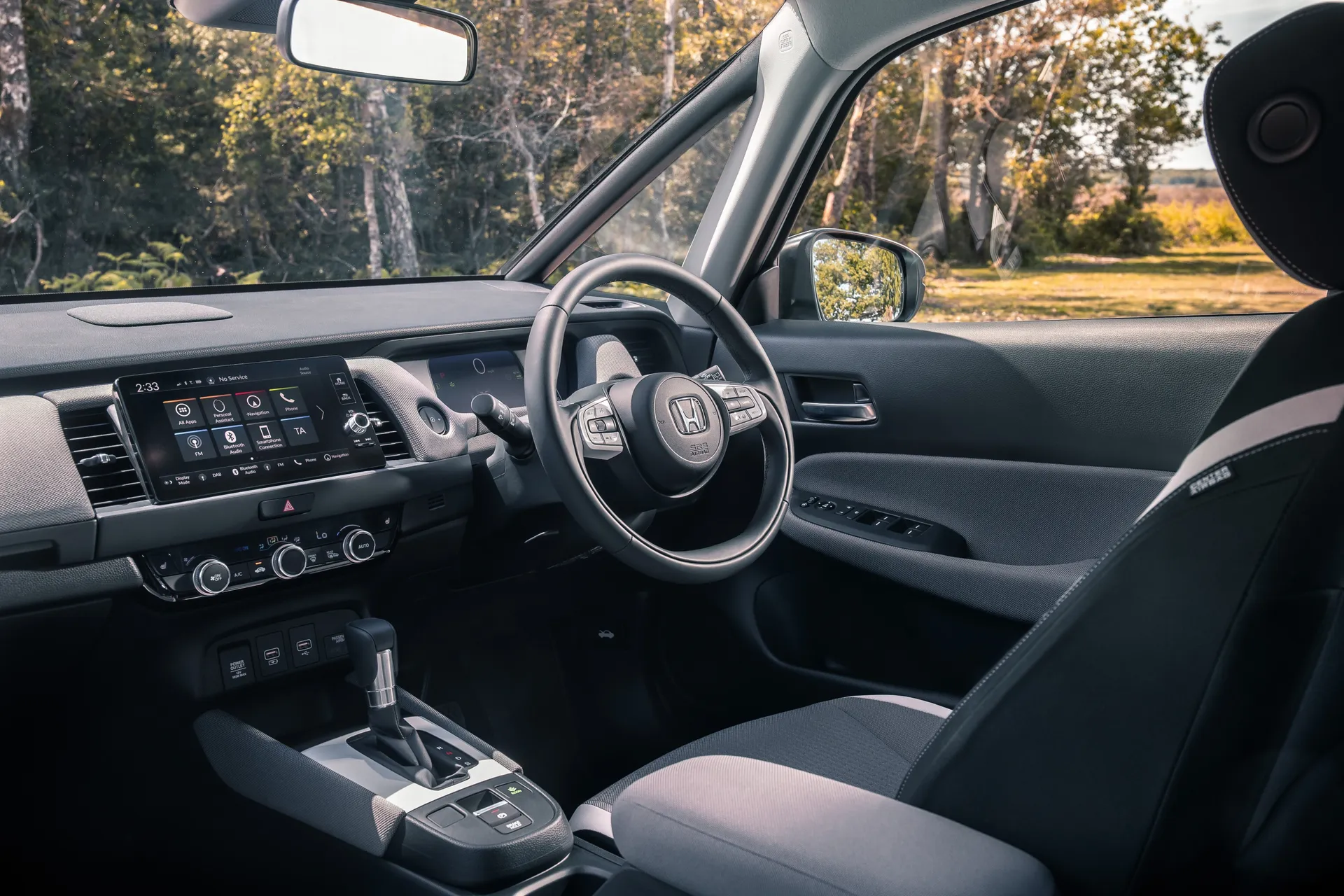
While the outside of the Jazz Crosstar has been given a rugged makeover, there’s little inside to differentiate it from the standard car. We’d love to see some wood trim and rubber floor mats… OK, maybe ‘love’ is too strong a word.
There is water-repellent upholstery in case the excitement of the Jazz Crosstar gets a little too much, but we actually prefer Jazz Advance's half leather.
These gripes aside, the Jazz Crosstar does have a very modern-looking cabin. We like its fabric-covered dash, and the large windscreen means it feels light and airy, like a conservatory. Wide, well-cushioned seats mean it’s a comfy choice, too. You can’t get adjustable lumbar support, but we found the seats to be pretty supportive for long journeys.
Like the standard Jazz, the Crosstar gets a digital dash in place of old-school dials. These are overloaded with information - from the outside temperature to whether your car's running on electricity or petrol. The current speed is displayed in large, clear font but it’s all a bit overwhelming at first, particularly as older Jazz models are known for being utterly simple to use.
Quality and finish
As you’d expect for a car that comes equipped with water-repellent seats, the Honda Jazz Crosstar feels more than capable of standing up to the rigours of family life.
There’s a fancy swath of fabric across the dash, hiding what would otherwise be a hard, shiny slab of plastic. Allow your fingers to wander down below and you’ll find brittle materials and a shortage of soft-touch finishes. The plastics used for the glovebox handle and around the electric window switches on the doors feel functional rather than luxurious. But the Jazz is about solidity, not plushness.
As the Crosstar is based on the high-spec Jazz Advance, it does feel more upmarket than the entry-level Elegance. You’ll find a leather-wrapped gear knob and steering wheel, and the chrome-finished heating controls look pretty modern, even if they don’t feel all that impressive. You’re not going to find nicely-damped buttons here.
Still, it’s all well put together. Going by previous Honda models, we doubt there’ll be trim falling off or an abundance of creaks a few years down the line. And that matters.
Infotainment: Touchscreen, USB, sat-nav and stereo in the Honda Jazz Crosstar
There’s a nine-inch media system stuck onto the dash of the Honda Jazz Crosstar as standard fitment. This is slightly annoying as it’s angled upwards and attracts reflections, meaning it’s not as easy to glance at as you might think.
On the plus side, it’s infinitely better than the infotainment systems we’ve seen in previous models from Honda. It’s got sharp graphics and is fast to respond, operating like a smartphone with apps laid out in a tile format on the home screen. There’s a voice recognition system too, so you don’t have to take your hands off the wheel while driving.
While some cars are a little too dependent on their central touchscreen systems to operate everything from adjusting the climate control to changing radio stations, Honda has resisted that route. There are actual buttons, knobs and switches for everything you could possibly want - simplicity itself.
Navigation is standard on the Jazz Crosstar, as is Apple CarPlay and Android Auto, meaning you can mirror apps from your phone onto the screen. Unfortunately, unlike the Honda E tech-fest - there’s no HDMI connection, so you can’t plug in your games console. There are USB outlets in the rear, though, meaning rear-seat passengers can charge their phones on the move.
The Crosstar also gets a decent sound system, albeit with four speakers rather than eight.
Space and practicality: Honda Jazz Crosstar boot space
Even if you’re comparing the Crosstar with actual crossover SUVs, it remains an immensely practical choice. Its 298-litre boot (down six litres compared to the Jazz EX) might not be as big on paper as the old Jazz, but it’s a useful shape and access is easy thanks to the large rear tailgate.
There’s not much in the way of a boot lip, and loading items into the boot is easier than in a fully-fledged SUV, while there’s a small amount of extra storage underneath the floor. You won’t find a spare wheel, unfortunately - just a tyre repair kit.
If you need more space, the rear bench (dubbed ‘Magic Seats’) can flip and fold to provide a flat floor or keep tall items upright. With the rear seats dropped, there’s space for up to 1199 litres of luggage. In plain English, that’s a lot.
If you do wish to use the rear seats, there’s plenty of room for a pair of adults. There’s an enormous amount of headroom, and you’re unlikely to struggle for legroom, either. It’s much less claustrophobic than a lot of small cars, thanks to big windows offering a good view out. If you’re looking to transport children, there are ISOFIX mounting points on the outer rear seats.
Things are just as impressive in the front. The driver’s seat offers manual height adjustment, while the steering wheel can be pulled in and out as well as up and down. You sit relatively high, even with the seat in its lowest setting, but don’t go expecting the same commanding driving position you’d get in something like a Suzuki Vitara.
There’s plenty of storage space, such as a useful cubby box under the armrest and no fewer than four cup holders (albeit relatively small ones, if we’re being picky). There’s room for a small water bottle and a few odds and ends in the door pockets too.
In terms of exterior dimensions, the Honda Jazz Crosstar is 4,090mm long, 1,725mm wide and 1,556mm tall. That makes it 45mm longer, 30mm wider and 30mm taller than the standard Jazz, mainly because of the extra body cladding and roof rails.
Handling and ride quality: What is the Honda Jazz Crosstar like to drive?
"You'd be hard-pushed to notice any real difference to the Jazz Crosstar's driving experience over the regular Jazz."
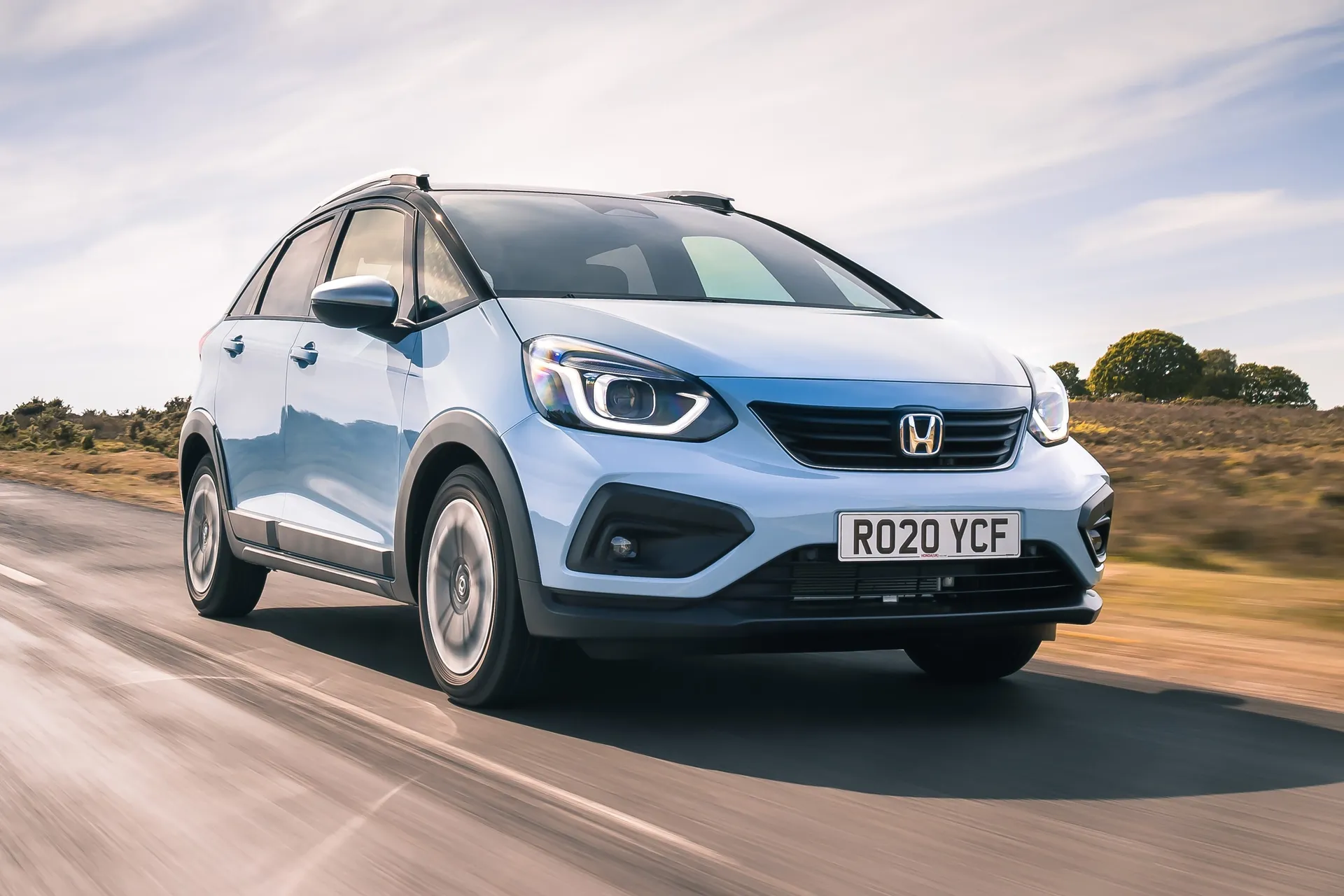
A bonus of beefed-up small cars like the Jazz Crosstar and alternatives like the Dacia Sandero Stepway and Honda HR-V is usually a softer, more compliant ride. However, while the Jazz Crosstar rides slightly higher than the normal Jazz, you’re not going to notice a perceivable improvement in ride quality.
Just like the standard car, it’ll thump a bit over bumps in the road - the Jazz has always been on the firm side for the small car class. If you’re looking for a car that hops (rather than crashes) over broken road surfaces, we’d recommend looking at the Citroen C3 Aircross instead.
On the plus side, the Jazz Crosstar handles just as well as the standard car. It doesn’t lean too much in bends, and it feels like a big, grown-up car on open roads. You’re not going to be intimidated by other traffic on the motorway.
It’s also brilliant around town. The turning circle is impressive - wind on the steering and it’ll turn 90 degrees in a tiny gap. If you plan on doing this regularly, though, we’d recommend the standard Jazz - wannabe-taxi drivers will find it has a slightly tighter turning circle.
Forward visibility is good, thanks to a huge windscreen and ultra-thin pillars. The standard-fit parking sensors are essential for judging the front of the bonnet, while a reversing camera (and usefully large door mirrors) helps when backing into a space.
It's 30mm taller than a standard Jazz but is still front-wheel drive, meaning it's not exactly a bonafide offroader. There aren’t any gimmicky electronic systems to help you get out of a muddy field either, so we wouldn't recommend taking it through the Amazon Rainforest.
What engines and gearboxes are available in the Honda Jazz Crosstar?
Just like the regular Honda Jazz, the Crosstar is only available with one engine. It’s a hybrid setup, combining a 1.5-litre petrol engine with two (count ‘em) electric motors and a small lithium-ion battery pack.
It’ll run in Hybrid mode most of the time, utilising the electric motors and the petrol engine. At high speeds, it’ll decouple the electric motors and rely on the petrol engine, while around town it can run under electric power alone for short distances.
This might all sound a bit complicated, but it isn’t really. You can drive the Jazz Crosstar just like you’d driven any petrol automatic, and the car will decide how to blend the two power sources most efficiently. It’s not a plug-in hybrid, either, meaning you don’t have to worry about charging the car to get the best from it.
Don’t go drag racing a standard Jazz as the Crosstar’s slightly more upright dimensions and bulkier weight means it’s ever-so-slightly slower, taking an extra half a second to reach 62mph.
In reality, you’re unlikely to notice a difference and it still feels very peppy, with enough performance for the occasional overtake or joining a motorway. Acceleration happens as soon as you require it - unlike small-capacity turbocharged rivals which can hesitate between you hitting the accelerator and the car gaining speed.
Refinement and noise levels
The hybrid Jazz Crosstar might not be as silent as the Honda e:Ny1 electric car, but it’s still impressively quiet on the move. There’s not a great deal of rumble when the petrol engine kicks in, and we like how it’ll glide to a stop and take off under electric power alone.
The single-speed transmission does cause a bit of noise under hard acceleration (it’ll be familiar to anyone who’s driven a car with a CVT gearbox before), but there’s enough power, so you rarely need to floor the throttle.
You’ll notice a bit of road noise on the move thanks to that harsh suspension and the Crosstar’s 16-inch wheels, but it’s not too intrusive. It’s well insulated from wind noise too, considering its far-from-aerodynamic styling.
Safety equipment: How safe is the Honda Jazz Crosstar?
Like the rest of the Jazz range, the Crosstar uses a wide-view front camera to monitor the road ahead. This supports features like the Collision Mitigation Braking System, which can notify the driver and even apply the brakes to prevent a collision (or at least reduce the impact).
Honda claims it goes further than more rudimentary systems, able to spot pedestrians on the road at night or identify an oncoming vehicle during turning. We wouldn’t recommend testing its ability for yourself, but it’s pretty impressive should the worst happen.
Further clever highlights include the Road Departure Mitigation System, which will nudge the steering if it looks like you’re about to venture off the road. It also has automatic high-beam headlights, adaptive cruise control and an intelligent speed limiter, which can adjust the top speed of your car depending on the current speed limit.
If you are involved in an accident, the Honda Jazz Crosstar is a very safe car to be in. It uses more high-strength steel compared to the previous model, and no fewer than 10 airbags will keep passengers cushioned in a crash. Euro NCAP awarded the Honda Jazz Crosstar a five-star safety rating when crash-tested in 2020.
MPG and fuel costs: What does a Honda Jazz Crosstar cost to run?
"The Crosstar’s fuel economy does take a slight knock compared to the standard Jazz, officially returning 58.9mpg (compared to the Jazz Hybrid’s 62.8mpg)."
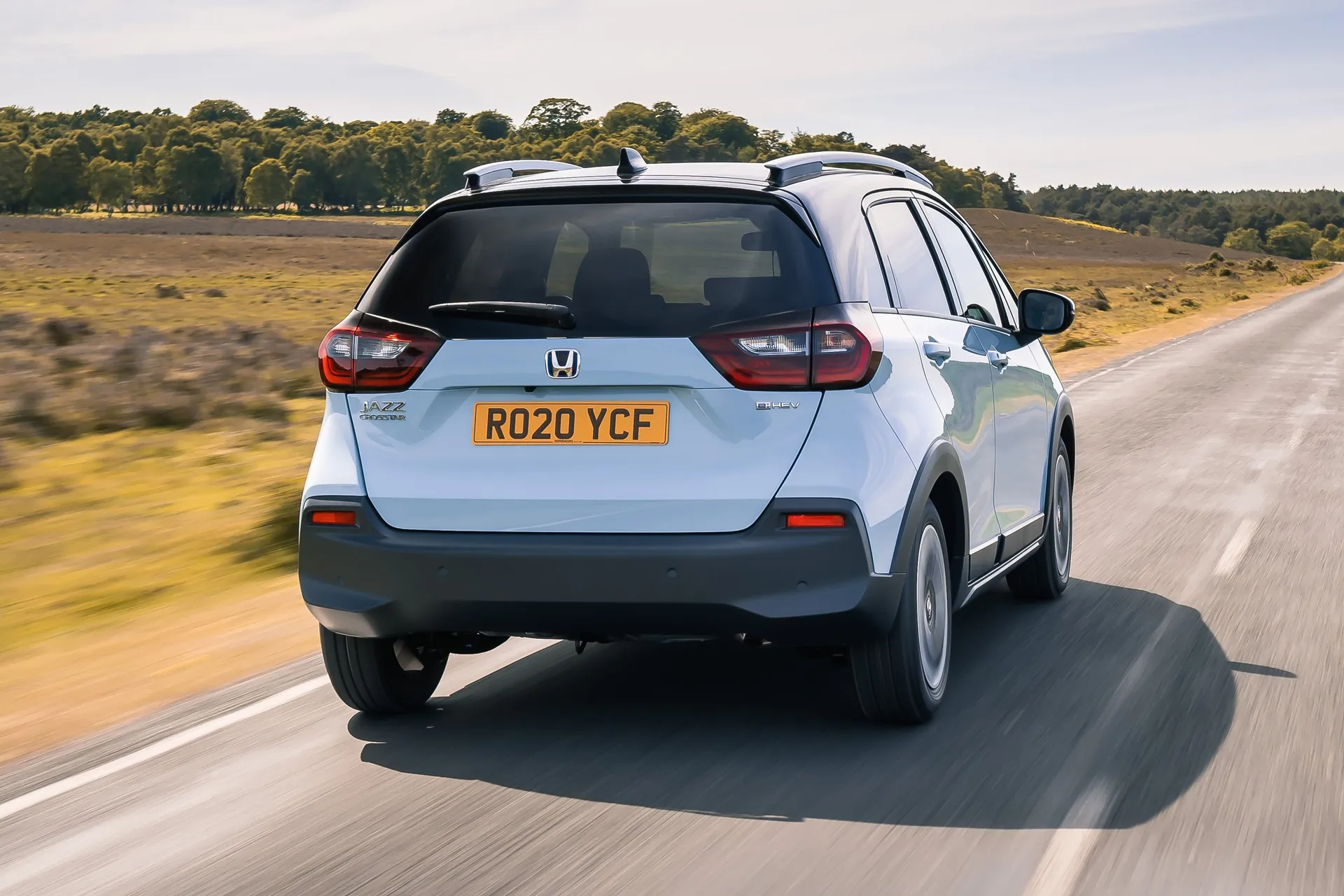
The consequence of chunky styling add-ons and a raised ride height means the Honda Jazz Crosstar is less capable at slipping through the air than the standard Jazz. That means a slight fuel economy penalty.
It's not severe: officially the Crosstar returns 58.9mpg (compared to the Jazz Hybrid’s 62.8mpg). The difference in the real world will be negligible though and, unlike turbocharged rivals, these figures should be fairly achievable. When driving the Crosstar, we saw around 60 mpg on the trip computer. Consider, too, that full-sized SUVs will be more compromised still in terms of fuel economy.
Honda Jazz Crosstar reliability and warranty
Honda finished mid-table in the latest HonestJohn.co.uk Satisfaction Index. That's not as high a ranking as we'd expect for the brand, which as with other Japanese brands such as Toyota has a pretty stellar reliability record.
You'll struggle to find Jazz owners who have a bad word to say about their cars, however. We'd expect the newcomer to be just as dependable as its predecessors, while this type of hybrid powertrain is known to be reliable and low-maintenance. It's only the new Jazz's increased technological complexity that means there's potentially more to go wrong.
Honda Jazz Crosstar insurance groups and costs
The Jazz Crosstar sits in insurance group 22. This is on the high side for a small car, but it's no more expensive to insure than the regular Jazz.
Whether it's due to its relatively high list price or because Jazz owners claim more on their insurance we're not sure, but the Vauxhall Corsa and Toyota Yaris are all cheaper to insure on paper.
VED car tax: What is the annual road tax on a Honda Jazz Crosstar?
As a hybrid model, the Jazz Crosstar is eligible for a £10 a year reduction in tax after the first year. That means you’ll pay a flat rate of £180 a year in tax. Just don’t spend the savings all at once.
Honda Jazz Crosstar price
"It’s not cheap, the Honda Jazz Crosstar. A new one will set you back more than £29,650; that's nearly £14,000 more than an entry-level Dacia Sandero Stepway.
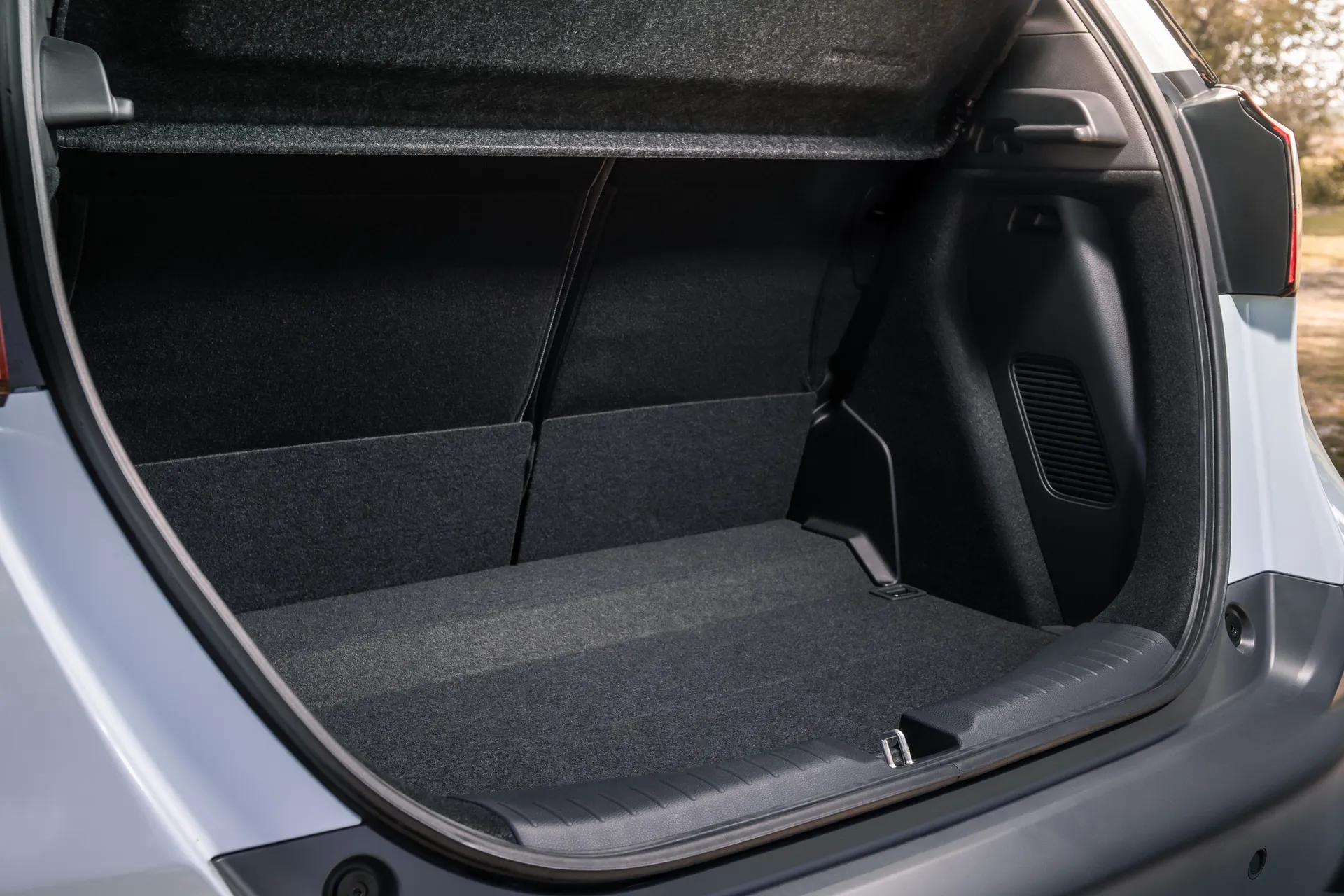
You can pick up an early EX car with nearly 80,000 miles for around £14,000. If a newer Advance model is what you seek, these are priced from £20,000.
Trim levels and standard equipment
The Honda Jazz Crosstar is based on the top-spec Jazz Advance, which itself comes with 16-inch alloy wheels, part-leather seats (heated in the front), a leather steering wheel and shift knob, and a heated steering wheel. There’s a rear-view camera and a nine-inch media system with Garmin navigation.
Besides the rugged Crosstar exterior styling, the Crosstar Advance (to give it its full name) comes with water-repellent fabric seats, a four-speaker sound system and black door mirrors. Roof rails complete the look.
Ask the heycar experts: common questions
Is the Honda Jazz Crosstar a self-charging hybrid?
What's the difference between a Honda Jazz and a Crosstar?
Is the Honda Jazz Crosstar worth it?
Get our latest advice, news and offers
Keep me updated by email with the latest advice, news and offers from heycar.
By submitting you agree to our privacy policy



